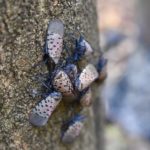Peach:
Oriental Fruit Moth (OFM): Third flight adults are present and trap counts are low on most farms, except in isolated areas in northern counties. The timing for 3rd generation treatments is done in southern counties, but ongoing in northern counties. Please see table below for timing: [Read more…]


